Charles Cornwallis Worksheets
Do you want to save dozens of hours in time? Get your evenings and weekends back? Be able to teach about Charles Cornwallis to your students?
Our worksheet bundle includes a fact file and printable worksheets and student activities. Perfect for both the classroom and homeschooling!
Resource Examples
Click any of the example images below to view a larger version.
Fact File
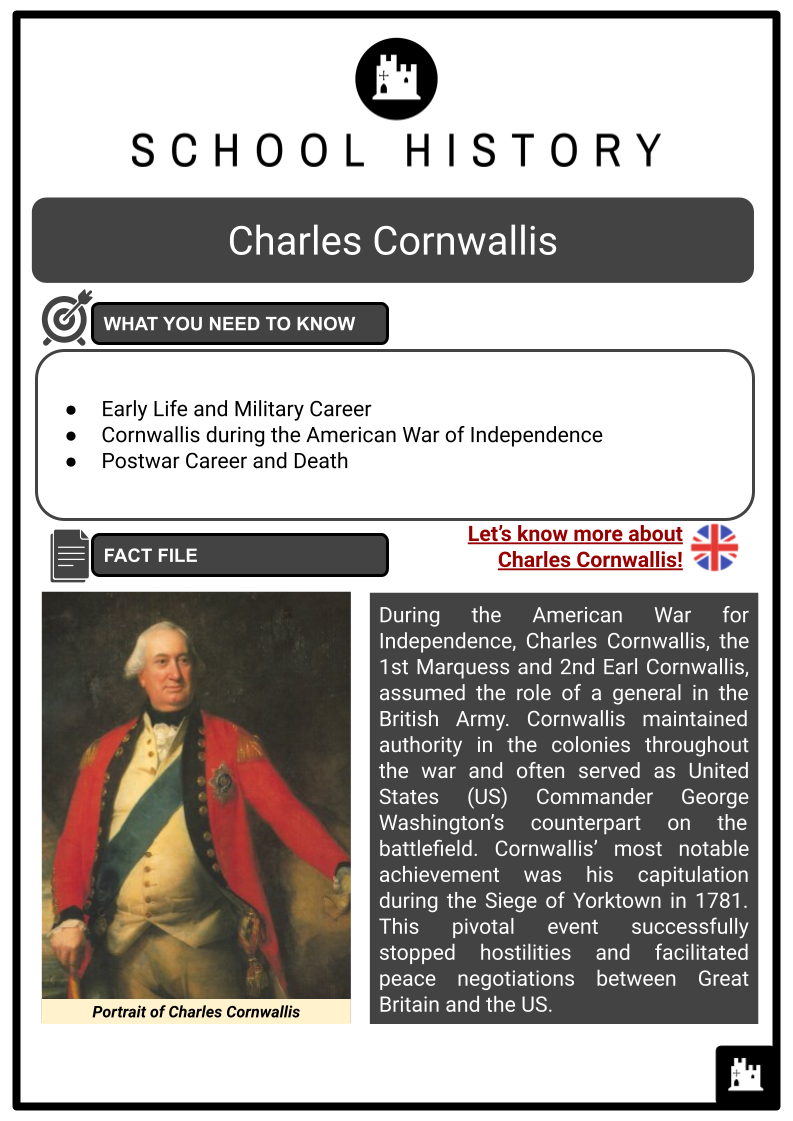
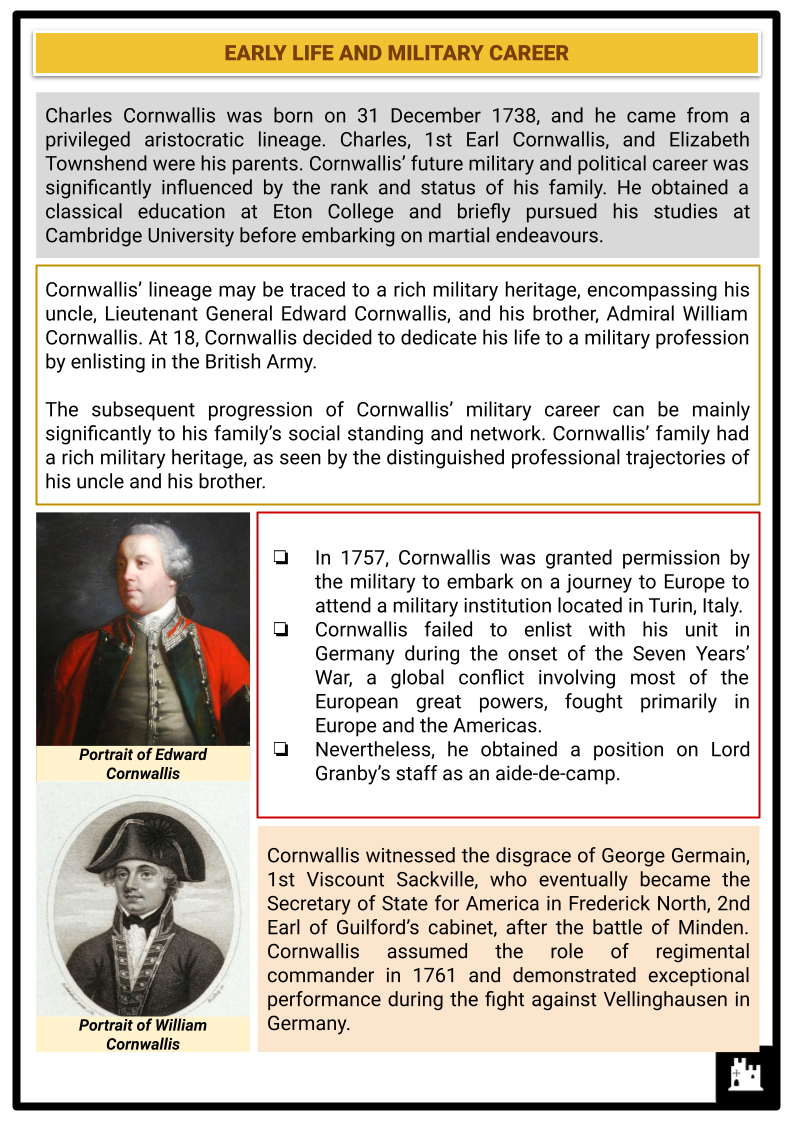
Student Activities
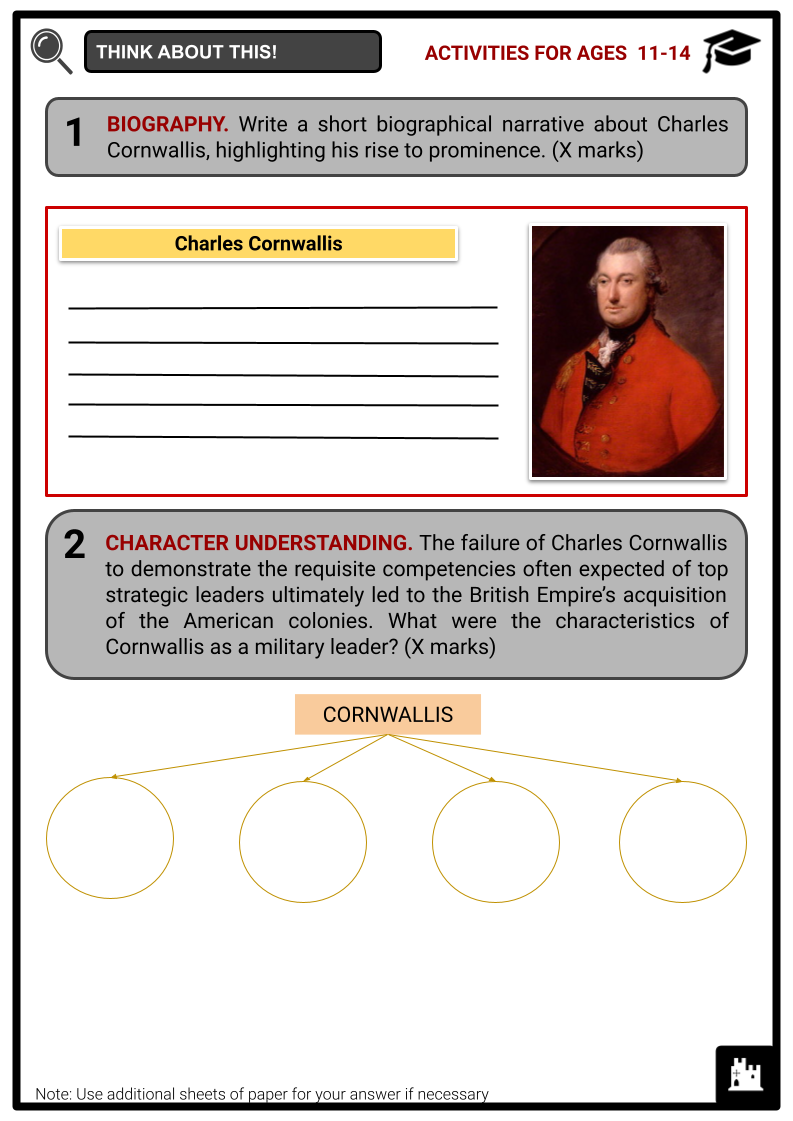
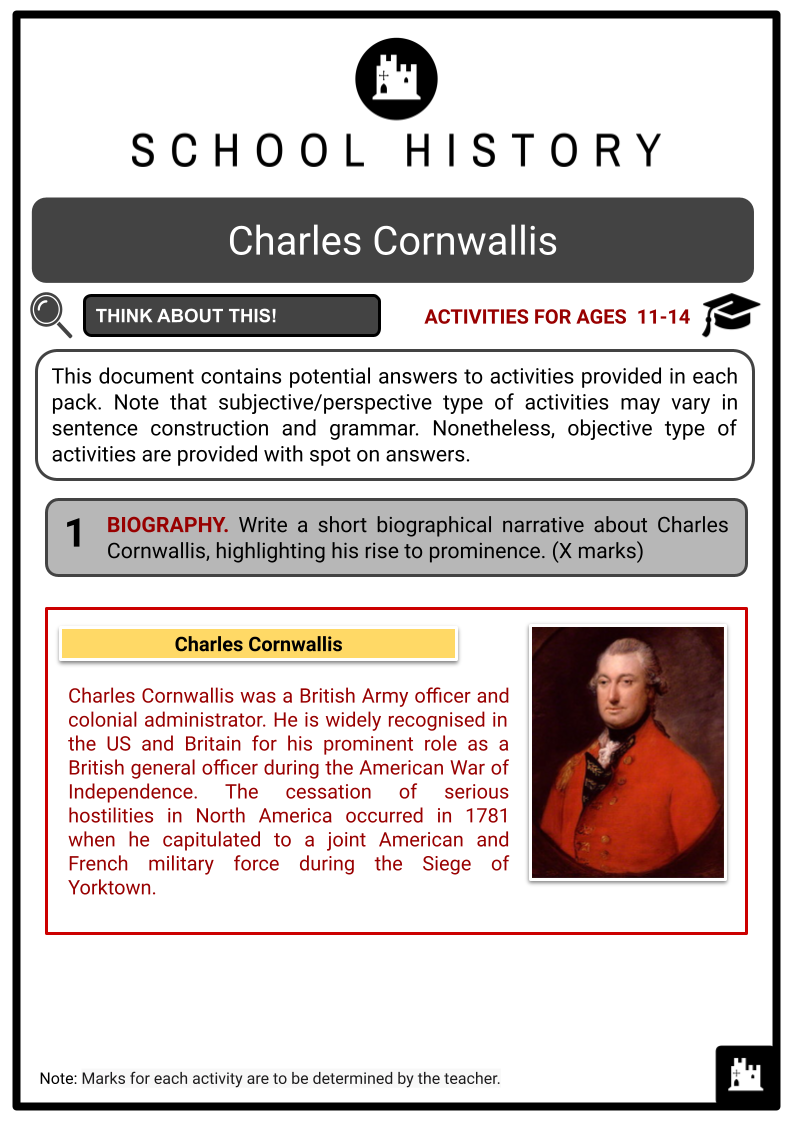
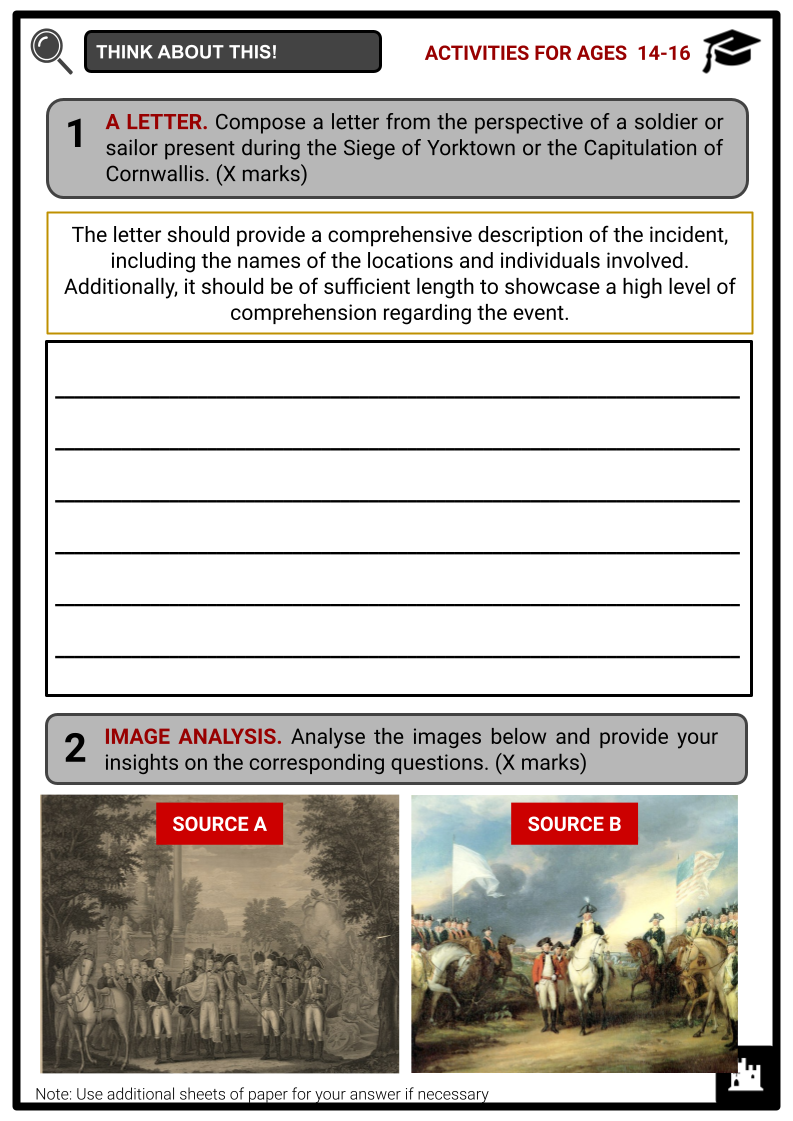
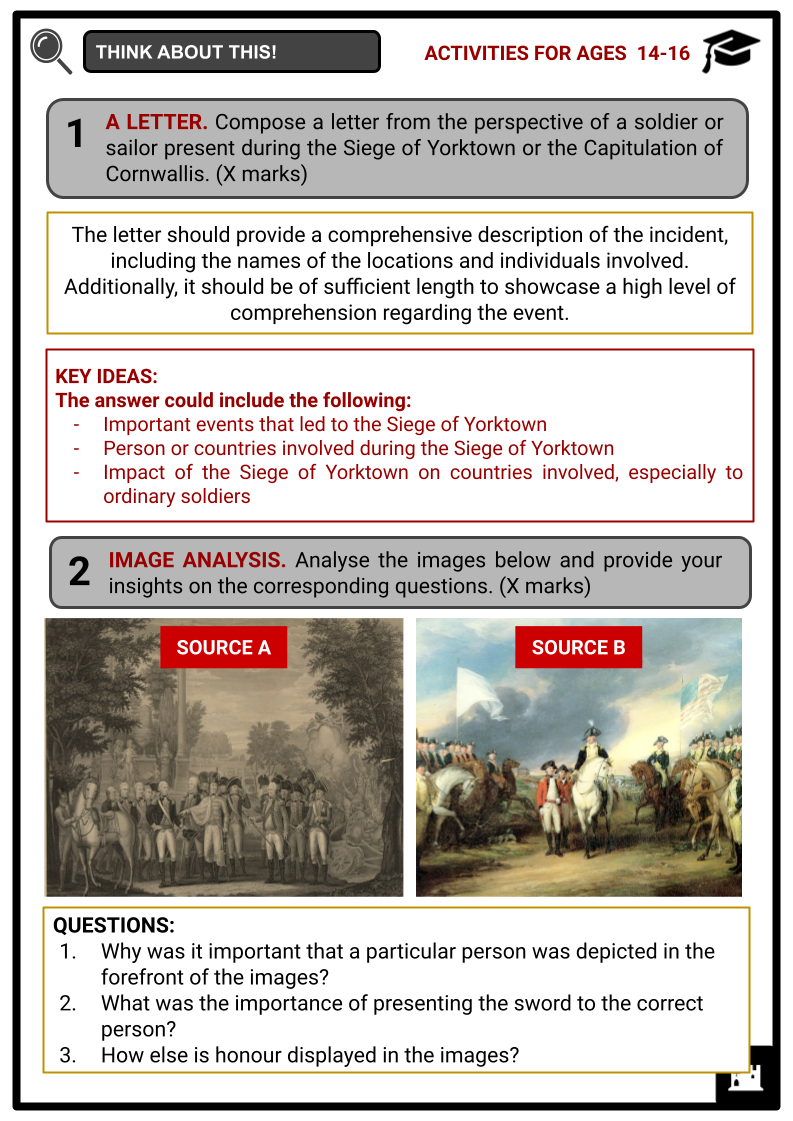
Summary
- Early Life and Military Career
- Cornwallis during the American War of Independence
- Postwar Career and Death
Key Facts And Information
Let’s know more about Charles Cornwallis!
During the American War for Independence, Charles Cornwallis, the 1st Marquess and 2nd Earl Cornwallis, assumed the role of a general in the British Army. Cornwallis maintained authority in the colonies throughout the war and often served as United States (US) Commander George Washington’s counterpart on the battlefield. Cornwallis’ most notable achievement was his capitulation during the Siege of Yorktown in 1781. This pivotal event successfully stopped hostilities and facilitated peace negotiations between Great Britain and the US.
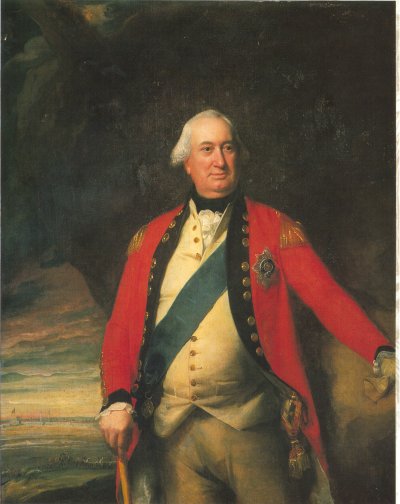
EARLY LIFE AND MILITARY CAREER
- Charles Cornwallis was born on 31 December 1738, and he came from a privileged aristocratic lineage. Charles, 1st Earl Cornwallis, and Elizabeth Townshend were his parents. Cornwallis’ future military and political career was significantly influenced by the rank and status of his family. He obtained a classical education at Eton College and briefly pursued his studies at Cambridge University before embarking on martial endeavours.
- Cornwallis’ lineage may be traced to a rich military heritage, encompassing his uncle, Lieutenant General Edward Cornwallis, and his brother, Admiral William Cornwallis. At 18, Cornwallis decided to dedicate his life to a military profession by enlisting in the British Army.
- The subsequent progression of Cornwallis’ military career can be mainly significantly to his family’s social standing and network. Cornwallis’ family had a rich military heritage, as seen by the distinguished professional trajectories of his uncle and his brother.
- In 1757, Cornwallis was granted permission by the military to embark on a journey to Europe to attend a military institution located in Turin, Italy.
- Cornwallis failed to enlist with his unit in Germany during the onset of the Seven Years’ War, a global conflict involving most of the European great powers, fought primarily in Europe and the Americas.
- Nevertheless, he obtained a position on Lord Granby’s staff as an aide-de-camp.
- Cornwallis witnessed the disgrace of George Germain, 1st Viscount Sackville, who eventually became the Secretary of State for America in Frederick North, 2nd Earl of Guilford’s cabinet, after the battle of Minden. Cornwallis assumed the role of regimental commander in 1761 and demonstrated exceptional performance during the fight against Vellinghausen in Germany.
- In the subsequent year, Cornwallis witnessed significant engagements at Wilhelmsthal and Lutterberg. Having accumulated extensive expertise in European warfare before arriving in America, he demonstrated himself to be a formidable adversary for the Continental Army.
- Cornwallis’ dissent towards British policies that incited American dissatisfaction, such as the Stamp Act, which he vehemently opposed, did not impede his decision to offer his services in America in 1775. The Stamp Act required the colonists to pay a tax, represented by a stamp, on various forms of papers, documents and playing cards.
CORNWALLIS DURING THE AMERICAN WAR OF INDEPENDENCE
- Cornwallis was trained as a major general before his departure to America on 10 February 1776. In February 1776, and serving as the colonel of the 33rd Regiment, he embarked on a voyage from Cork, Ireland, to bolster General Henry Clinton’s southern expedition.
- During the southern expedition, Cornwallis saw the conflicts between Clinton and Commodore Sir Peter Parker, the naval commander. Regrettably, Cornwallis did not leave any documented reflections regarding the poorly executed campaign for future generations.
- Following the British defeat at the Battle of Sullivan’s Island, South Carolina was abandoned after the siege on Charleston. Cornwallis and Clinton departed to join Sir William Howe in the capture of New York. The acquisition of New York by the British proved to be their most significant triumph of the war, encompassing a substantial number of troops and sailors.
- Cornwallis willingly subjected himself to perilous situations, openly commanding his troops on the battlefields. Cornwallis was involved in the British military operation that defeated American resistance at Kip’s Bay during the occupation of Manhattan on 15 September 1776. On 20 November 1776 he sent a directive to the British contingent deployed across the Hudson River to seize Fort Lee situated on Jersey Heights.
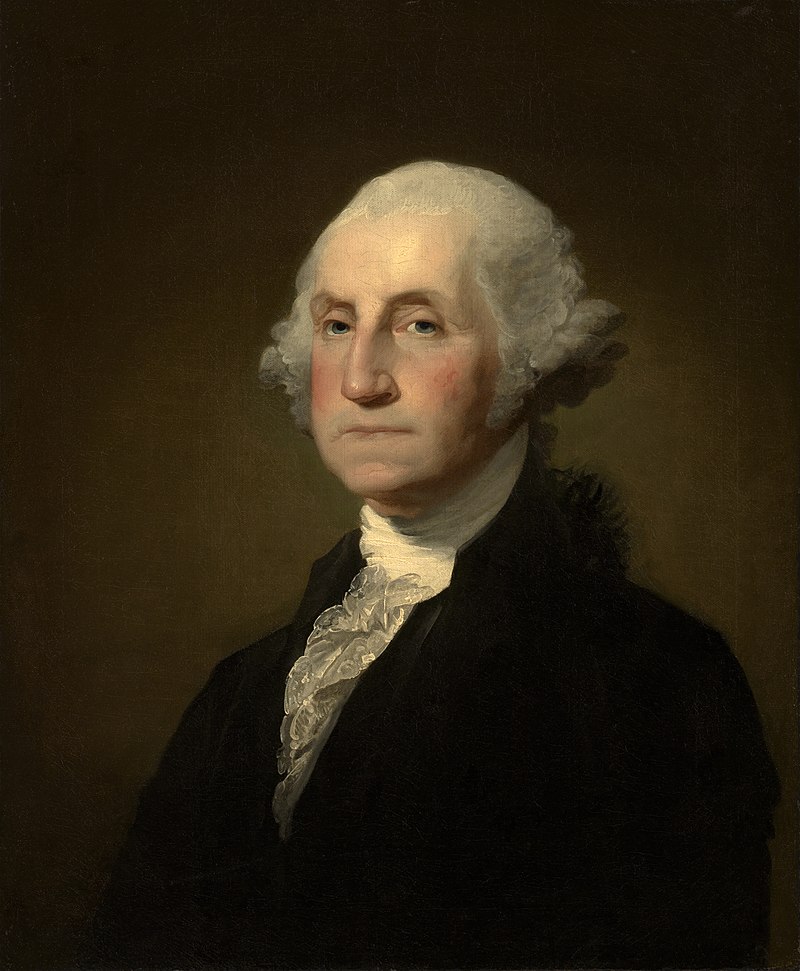
- Due to the abandonment of the fort by Washington’s army, Cornwallis successfully seized control of the fort and a significant quantity of supplies, thereby failing to achieve a triumph over the Americans. During the period spanning late November and December 1776, Cornwallis engaged in a pursuit of Washington’s army throughout the state of New Jersey.
- On 1 December 1776, Cornwallis was unsuccessful in his claim of ‘bagging the fox’, Washington, as he halted his movement on the shores of the Raritan River in compliance with Howe’s directive to maintain his position. As Cornwallis made preparations to depart for London, the British set their winter quarters in various locations across New York and New Jersey under the belief that the campaign season had concluded.
- In light of Washington’s unexpected assault on the Hessian garrison at Trenton, Cornwallis once again embarked on a journey across the battlefield, covering a distance of 50 miles in order to coordinate a British reaction.
- On 2 January 1777, Cornwallis’ military forces, consisting of 8,000 men, initiated combat against Washington’s army during the Battle of Second Trenton, also known as the Battle of Assunpink Creek.
British capture of Philadelphia
- Following the loss at Princeton, Cornwallis resided in London over the winter season before his return to the US for the spring campaign. His contributions played a crucial role in the British triumph at Brandywine on 11 September 1777 and the subsequent seizure of Philadelphia within a fortnight.
- During the Battle of Brandywine, Cornwallis executed a pivotal manoeuvre by commanding a contingent of 8,000 troops in a flanking assault that effectively divided the line of the Continental Army, resulting in the defeat of the forces under the command of Major General John Sullivan, a prominent patriot.
- After several weeks, Cornwallis capitalised on Howe’s strategic manoeuvre towards Reading, prompting Washington’s military forces to retaliate, and proceeded to enter the city of Philadelphia without engaging in any combat.
- Nevertheless, the triumphs were tarnished by the decisive loss and capitulation of General John Burgoyne’s military forces in Saratoga, New York, on 17 October 1777. After the campaign season, Cornwallis departed from the US and went to England again.
- Cornwallis consistently maintained his allegiance to Howe and was a corroborating witness in his parliamentary investigation about Saratoga.
Southern Campaign
- In the spring of 1780, Cornwallis embarked on a journey to South Carolina shortly after he arrived in America. By this time, the British had redirected their military endeavours towards the southern region. Promoted to the rank of lieutenant general and designated as the second-in-command to Sir Henry Clinton in the US, he accompanied Clinton during the British siege of Charleston.
- Despite their first cordial encounter, the two individuals swiftly cultivated a strained rapport that had a detrimental impact on subsequent correspondence.
- The surrender of the Continental Army and the city of Charleston, which marked the most significant British triumph of the war, was commemorated by the two generals on 12 May 1780.
- Following the triumph, Clinton returned to New York and departed from Cornwallis with approximately 8,000 troops, entrusted with ensuring the British control over South Carolina. The southern campaign led by Cornwallis commenced with a remarkable triumph over General Horatio Gates during the Battle of Camden on 16 August 1780.
- The British surpassed the army led by Gates, which consisted of militia forces who retreated and fled.
- The triumph effectively eradicated any organised opposition from the Continental Army in the southern theatre for a considerable duration, as it took a considerable amount of time for General Nathanael Greene, who succeeded Gates, to rectify the situation.
- Following the triumph at Camden, Cornwallis embarked on a mission to appease the rural areas. This was challenging due to resolute opposition from the patriot militia, who were angered by Clinton’s declaration urging loyalty to the British monarchy.
- The British formulated their southern campaign on the premise that the southern region was predominantly inhabited by loyalists, who were expected to align themselves with the royal flag.
- Although loyalists supported British operations in the south, their numbers fell short of the expectations and beliefs held by the British government.
- The expected backing from the allied Cherokee and Creek nations was also unsatisfactory, exacerbating the estrangement of southern frontiersmen towards the British. In order to gain control over the southern interior and backwoods, Cornwallis strategically divided his forces to focus on specific areas of patriot resistance.
- Following the defeats of his subordinate commanders, Major Patrick Ferguson and Lieutenant Colonel Banastre Tarleton, at the battles of Kings Mountain and Cowpens, Cornwallis faced the choice of either retreating to engage in a defensive conflict in South Carolina or resuming his offensive in North Carolina to reverse the damage caused by Kings Mountain.
- In light of the increasingly critical circumstances, Cornwallis endeavoured to deliver a final blow to dismantle Greene’s expanding military force. He instructed his soldiers to annihilate their luggage and initiated a ferocious pursuit of their adversary towards the Dan River.
- Cornwallis ultimately apprehended Greene, leading to the commencement of the Battle of Guilford Courthouse on 15 March 1781, with the participation of both forces. The British emerged victorious in the engagement, but at a significant expense, while the Continentals, led by Greene, successfully executed a well-coordinated retreat.
Campaign in Virginia & Siege of Yorktown
- Notwithstanding the casualties incurred by his army, Cornwallis decided to depart from Wilmington, North Carolina and proceed towards the inadequately fortified and densely populated colony of Virginia.
- In the interim, Greene’s Continental Army remained strategically positioned in the Carolinas, progressively relocating the British forces to coastal enclaves located in Charleston and Wilmington.
- Cornwallis instigated a disorder in Virginia by successfully seizing control of Richmond and Charlottesville. Lieutenant Colonel Banastre Tarleton, the formidable leader of the British Legion, orchestrated an assault on Monticello, the private residence of Governor Thomas Jefferson, to apprehend the author of the Declaration of Independence.
- Following these victories, the British Army remained precarious, prompting Clinton to command Cornwallis to construct a naval outpost on the Chesapeake. Clinton, experiencing apprehension regarding Cornwallis’ operations, issued a directive to withdraw his forces to New York.
- On 28 September 1781, the Allied forces initiated a siege on the British soldiers at Yorktown. In response to the superiority of his adversary, Cornwallis opted to withdraw his outer defences in proximity to the town of Yorktown.
- The French and American forces employed a consistent barrage of artillery fire, gradually advancing their siege lines and ultimately seizing control of two British redoubts that played a crucial role in the British outer defences. Cornwallis, being compelled to capitulate, dispatched a flag of truce on 17 October 1781 to negotiate for the surrender of his military forces.
- Cornwallis attempted to capitulate with the customary perks of war. However, Washington insisted on stringent conditions, as they had previously withheld those perks from the Americans during the surrender of Charleston in May 1780. The signing ceremony for the Articles of Surrender took place on 19 October 1781.
- Due to his inability to endure the humiliation, Cornwallis refrained from participating in the surrender ceremony, attributing his absence to illness. Brigadier Charles O’Hara led the British army to the surrender field, where he attempted to present his sword to French General Rochambeau. However, Rochambeau declined the offer.
- Subsequently, he extended the offer to Washington, who declined and promptly indicated General Benjamin Lincoln. The defeat suffered by Cornwallis at Yorktown resulted in the termination of significant warfare.
- The Treaty of Paris of 1783, which acknowledged the independence of the United States, was the outcome of peace negotiations between the British and Americans.
POSTWAR CAREER AND DEATH
- Cornwallis’ postwar career was notably prosperous compared to other British generals who played significant roles in the American Revolution. Cornwallis embarked on a voyage from New York to Portsmouth, England, accompanied by Benedict Arnold. Notwithstanding his capitulation at Yorktown, the populace bestowed a heroic reception upon his repatriation to England.
- Cornwallis was appointed as a Knight of the Garter by King George III in 1786. Cornwallis also assumed the role of the governor-general of Bengal and commander-in-chief of British forces in India in the year 1786. In the Third Mysore War, he successfully vanquished a contingent of 40,000 warriors led by Tipu Sultan, despite commanding a greater army of 20,000 men than his southern army during the Revolution.
- This campaign played a crucial role in facilitating British dominion over southern India. The implementation of racial segregation in offices by Cornwallis resulted in the progressive acquisition of high jobs exclusively by white imperial officials.
- Furthermore, he attempted to establish a very effective imperial bureaucracy. In 1798, Cornwallis was appointed as the lord lieutenant and commander in chief of Ireland following his notable achievements in India.
- In Ireland, Cornwallis, in his capacity as a lieutenant general, successfully guided his troops into combat, resulting in the triumph over a French invasion contingent consisting of 1,100 soldiers under the command of General Joseph Humbert.
- During a stroll in Dublin in 1799, he fell prey to an assassination attempt when a disguised sentry opened fire on him and subsequently escaped. Cornwallis arrived back in India in 1805 and passed away shortly after that.
- The House of Commons approved the construction of a plaque and statue in St. Paul’s Cathedral as a tribute to his memory.
Frequently Asked Questions
- Who was Charles Cornwallis?
Charles Cornwallis, 1st Marquess Cornwallis, was a British military officer and colonial administrator during the American Revolutionary War and other conflicts of the late 18th century.
- What is Charles Cornwallis best known for?
Cornwallis is best known for his role as a British general during the American Revolutionary War, particularly for his surrender to General George Washington at the Siege of Yorktown in 1781, effectively ending the war.
- Why is the Siege of Yorktown significant?
The Siege of Yorktown in 1781 marked a turning point in the American Revolutionary War, as it led to Cornwallis's surrender to American and French forces under General George Washington and the Comte de Rochambeau, effectively ending primary military operations in North America.
